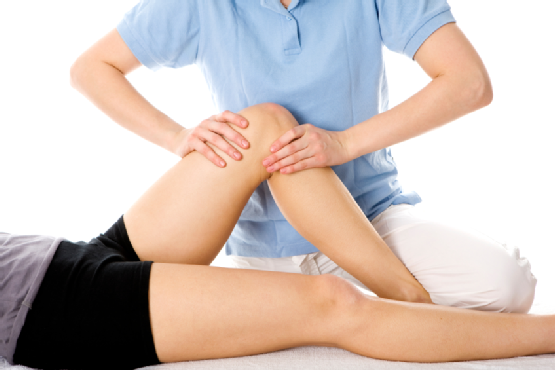
Knee pain is a common issue that can affect people of all ages. It can develop suddenly due to an injury or gradually over time due to underlying medical conditions. The knee is one of the largest and most complex joints in the body, made up of bones, cartilage, knee pain and treatment , and tendons. When any part of the knee is damaged or strained, pain may occur.
Common Causes of Knee Pain
There are many reasons why knee pain might develop. Some of the most common causes include:
Injuries:
Accidents, falls, or sudden twisting movements can lead to injuries such as torn ligaments, fractures, or dislocated kneecaps. These types of injuries are often seen in athletes and physically active individuals.
Arthritis:
Osteoarthritis is the most common form of arthritis that affects the knee. It happens when the cartilage in the joint wears down over time, causing pain and stiffness. Other forms like rheumatoid arthritis or gout can also lead to knee discomfort.
Overuse:
Repeated stress on the knee joint, especially from certain sports, work, or even improper movement patterns, can cause pain. Conditions like tendinitis or bursitis develop as a result of overuse.
Mechanical Issues:
If the bones of the knee are not lined up properly or if the kneecap moves out of place, it can result in long-term pain. Foot problems or hip misalignments may also contribute.
Obesity:
Carrying extra body weight adds stress on the knee joints. This can speed up joint degeneration and increase the risk of chronic pain.
Symptoms of Knee Pain
The symptoms associated with knee pain can vary depending on the cause. Some signs to look for include:
-
Swelling or stiffness
-
Redness and warmth around the joint
-
Popping or crunching sounds
-
Inability to fully straighten the knee
-
Weakness or feeling unstable while walking
When to See a Doctor
While some knee pain may go away on its own with rest, others may need medical attention. Seek help if you experience:
-
Severe pain or swelling
-
Deformity in the knee
-
Inability to bear weight
-
Fever along with swelling or redness
-
Pain that continues to get worse over time
Treatment Options for Knee Pain
There are several treatment methods available depending on the cause and severity of the pain. The goal is to reduce discomfort, improve mobility, and prevent further damage.
Home Care
For mild to moderate pain, home remedies can be effective. These may include:
-
Rest: Taking a break from activities that worsen pain
-
Ice: Applying ice packs to reduce swelling
-
Compression: Using a knee wrap to provide support
-
Elevation: Keeping the leg raised to reduce fluid buildup
Medications
Over-the-counter pain relievers such as paracetamol or anti-inflammatory drugs can be helpful. In more serious cases, a doctor may prescribe stronger medicines or corticosteroid injections to reduce inflammation.
Physical Therapy
A trained therapist can guide exercises to strengthen the muscles around the knee, improve flexibility, and restore normal joint movement. This is often recommended for recovery after an injury or surgery.
Supportive Devices
Using a knee brace or orthotic shoe inserts can reduce stress on the knee. These tools help maintain proper alignment and improve daily functioning.
Lifestyle Changes
Maintaining a healthy weight is key to reducing pressure on the knees. Low-impact activities like swimming, cycling, or walking can improve joint strength without increasing pain.
Medical Procedures
If non-surgical options do not work, medical procedures may be necessary. Some common procedures include:
-
Arthroscopic Surgery: A small camera is inserted into the knee to repair damaged parts.
-
Partial Knee Replacement: Only the damaged part of the knee is replaced.
-
Total Knee Replacement: The entire knee joint is replaced with artificial parts.
Alternative Treatments
Some individuals find relief through methods like acupuncture, massage therapy, or herbal supplements. While these may not work for everyone, they can be considered along with regular treatments after discussing with a doctor.
Preventing Knee Pain
Preventing knee pain is better than having to treat it later. You can take the following steps to protect your knees:
-
Always warm up before exercise
-
Wear proper shoes that support your feet
-
Avoid sudden changes in workout intensity
-
Strengthen the muscles in your legs and hips
-
Maintain a healthy weight
-
Use correct techniques while lifting or performing tasks
Living with Knee Pain
Chronic knee pain can affect your daily life, but with proper management, it’s possible to lead an active lifestyle. Being patient and following a treatment plan can lead to improvement over time.
Exercises for Knee Strength
Simple exercises can help strengthen the knee and reduce pain. These include:
-
Straight leg raises
-
Hamstring stretches
-
Step-ups
-
Wall sits
-
Calf raises
Doing these exercises regularly under supervision can enhance recovery and avoid future injuries.
Role of Diet in Knee Health
Eating a balanced diet that supports bone and joint health can make a difference. Foods rich in calcium, vitamin D, and anti-inflammatory properties like leafy greens, fruits, nuts, and fish can support joint health.
Mental Well-being and Pain
Chronic pain can affect mental health. Stress and anxiety can make pain feel worse. Taking care of your mental health through relaxation, therapy, or mindfulness can support the healing process.
Summary
Knee pain is a common condition with many causes, but it can be managed effectively with the right treatment. From simple home care to advanced surgery, there are solutions for every level of discomfort. Early diagnosis and treatment are key to a better quality of life. If you're dealing with knee pain, consult a professional to identify the best course of action.
If you are looking for reliable and effective knee pain treatment, Hash Clinics offers expert care tailored to your needs.
Comments on “Understanding Knee Pain and Treatment Options for Relief and Recovery”